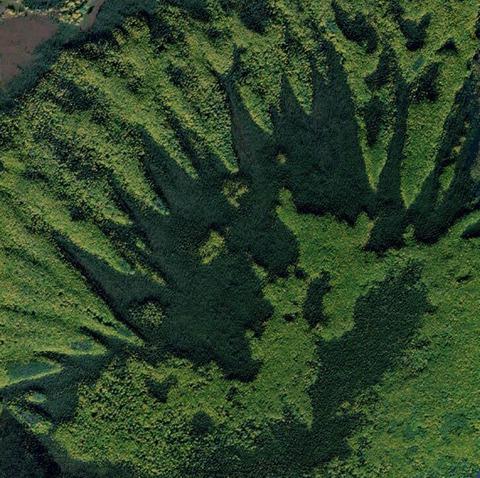Our official English website, www.x-mol.net, welcomes your
feedback! (Note: you will need to create a separate account there.)
Comparative drought sensitivity of co-occurring white spruce and paper birch in interior Alaska
Journal of Ecology ( IF 5.3 ) Pub Date : 2021-03-23 , DOI: 10.1111/1365-2745.13654 Patrick F. Sullivan 1 , Annalis H. Brownlee 1 , Sarah B.Z. Ellison 1, 2 , Sean M.P. Cahoon 1, 2
中文翻译:

阿拉斯加内陆共生白云杉和纸桦树的比较干旱敏感性
更新日期:2021-03-23
Journal of Ecology ( IF 5.3 ) Pub Date : 2021-03-23 , DOI: 10.1111/1365-2745.13654 Patrick F. Sullivan 1 , Annalis H. Brownlee 1 , Sarah B.Z. Ellison 1, 2 , Sean M.P. Cahoon 1, 2
Affiliation

|
- Numerous recent studies have argued that moisture limitation is leading to growth declines and mortality of black spruce (Picea mariana) and white spruce (Picea glauca) in the North American boreal forest. A parallel line of research suggests that increasingly common severe wildfires are altering successional pathways and leading to long-term replacement of spruce forests with those dominated by paper birch (Betula papyrifera, Betula neoalaskana) and trembling aspen (Populus tremuloides). When both conifers and deciduous trees establish after fire, this biome shift hypothesis implicitly assumes that deciduous species will outcompete the conifers, owing to their more rapid vertical growth and because they might be less sensitive to warm and dry conditions.
- We established a research site in a white spruce-paper birch forest on an east-facing slope in interior Alaska and tested the hypothesis that Alaska paper birch are better adapted to warm and dry conditions than white spruce. Over 6 years (2013–2018), we made hourly measurements of microclimate and xylem sap flux of both species. We also collected increment cores and conducted climate-growth analyses for both species.
- During our 6-year study, growing seasons with low volumetric soil water content (SWC) were those that followed shallow winter snowpacks and had limited summer rainfall, not necessarily those with warm air temperature. Both species were sensitive to moisture limitation. The tree-ring data revealed significant positive effects of cumulative water year precipitation on radial growth, with a steeper slope for paper birch than for white spruce. Radial growth of both species was also positively related to mean water year air temperature. Sap flux density declined progressively for white spruce over the range of observed SWC and abruptly for paper birch when SWC fell below ~15%.
- Synthesis. Our results show that, while paper birch might be less sensitive to mild drought than white spruce, it may be more sensitive to severe drought, raising questions about the ability of paper birch to outcompete co-occurring white spruce in a drier climate.
中文翻译:

阿拉斯加内陆共生白云杉和纸桦树的比较干旱敏感性
- 最近的许多研究认为,水分限制导致北美北方森林中的黑云杉 ( Picea mariana ) 和白云杉 ( Picea glauca ) 的生长下降和死亡。一项平行研究表明,越来越普遍的严重野火正在改变演替路径,并导致云杉林长期被纸桦(Betula papyrifera , Betula neoalaskana)和颤杨(Populus tremuloides)为主的森林取代。)。当针叶树和落叶树都在火灾后建立时,这种生物群落转变假设隐含地假设落叶树种将在竞争中胜过针叶树,因为它们的垂直生长速度更快,而且它们可能对温暖和干燥的条件不太敏感。
- 我们在阿拉斯加内陆朝东的斜坡上的白云杉纸桦林中建立了一个研究地点,并测试了阿拉斯加纸桦比白云杉更能适应温暖和干燥条件的假设。6 年多来(2013-2018),我们每小时测量两个物种的小气候和木质部汁液通量。我们还收集了增量核心并对这两个物种进行了气候增长分析。
- 在我们为期 6 年的研究中,土壤体积含水量 (SWC) 低的生长季节是在冬季积雪较浅且夏季降雨量有限的季节,而不一定是气温较高的季节。这两个物种都对水分限制敏感。树木年轮数据揭示了累积水年降水量对径向生长的显着积极影响,纸桦树的斜率比白云杉的斜率更大。两个物种的径向生长也与平均水年气温呈正相关。在观察到的 SWC 范围内,白云杉的树液通量密度逐渐下降,而当 SWC 低于 ~15% 时,纸桦树的液流密度突然下降。
- 合成。我们的结果表明,虽然纸桦对轻度干旱的敏感度可能不如白云杉,但它可能对严重干旱更敏感,这引发了关于纸桦在较干燥的气候中能否胜过共生白云杉的能力的问题。











































 京公网安备 11010802027423号
京公网安备 11010802027423号